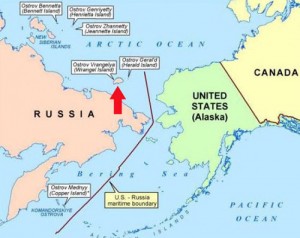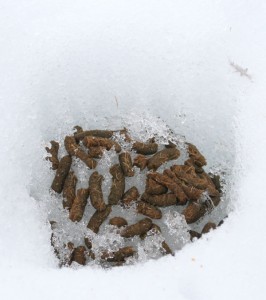The more remote the destination, the happier I am, so in the summer of 2003 I joined a Russian expedition to Wrangel Island, a 5,180 square kilometer chunk of Arctic real estate several hundred miles north of Siberia. Such is the island’s remoteness that its first documented visit didn’t occur until as recently as 1881, when the American whaling captain Calvin Hooper briefly went ashore with the naturalist John Muir.
Wrangel is a state nature preserve, the Russian equivalent of a natural park. But unlike Yellowstone or Yosemite, it has no facilities for the public (no public, either). We first went ashore at Rodzhersa Bay, where there was a small Russian research station. For want of funding, this station was remarkably rundown. I got the impression that the half dozen scientists who worked here did so for love. They certainly weren’t here for the money.Inside a makeshift barn were four baby musk oxen, descendants of 20 animals brought here from Canada in 1975. Something about Wrangel’s air must be aphrodisiacal, since now more than 800 musk oxen roam the island.
I asked one of the Russians — a lavishly-bearded man who resembled the young Dostoevsky — whether a large invasive species like the musk ox might have a detrimental effect on the local ecosystem.
“Is problem, da,” he replied, “which is why we will be sending these babies to the mainland. We have another problem — no womens.”
Before he could mention any more problems, a border guard approached me and said: “CIA?” The look on his face was very serious.
“Nyet,” I replied. “Ph.D.”
The border guard burst into laughter, and I was off the hook. But if I had been found guilty of stealing local secrets, such as (for instance) whether insects or the wind were responsible for early spring pollination, what could he have done? Send me to Siberia?
Later I decided to hike the several miles from Cape Litke to Cape Uering, where members of the 1914 Karluk research expedition had overwintered. I should say some of them had overwintered. Of the 25 expedition members, 11 died of food poisoning, malnutrition, and hypothermia. If it hadn’t been for Captain Bob Bartlett’s heroic heroic sledge journey back to civilization, all of them would have died.
Half a mile into my hike, I came upon a group of tumbledown wooden huts and an outhouse, perhaps the northernmost structure of its kind in the world. A broken anemometer suggested another Russian scientific station fallen on financial hardship.
Soon I was walking over seemingly endless rolling tundra. Birds were everywhere. Screaming tour-a-wee, tour-a-wee, a female black-bellied plover feigned a broken wing, a maneuver designed to lure me from her nest. Wildflowers were everywhere, too. Blue harebells. Red rose root. Yellow poppies. Bright pink bistorts. Lilac fleabanes. Buttercups. Such an explosion of color gave the lie to the notion that the Arctic is a dull, achromatic place.
And then I reached Cape Uering. Whatever might have survived of the Karluk expedition was gone, either picked up by the Russians or reclaimed by the Arctic itself. The site was now buried beneath a veritable carpet of moss campion, harebells, and purple saxifrage. This pleased me more than any Karluk artifact would have done. But then who would not be more pleased by a small, perfect wildflower vibrating in the wind than by a scrap from an old tent or a rusty tin can?


